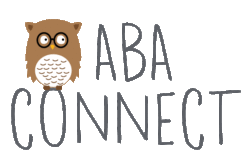Supplemental and Alternative ADHD Interventions
Popular supplemental and alternative ADHD interventions include removing certain foods from an individual’s diet or adding vitamins/supplements and other foods. Some of these methods may be minimally effective. It is important to consider the risk, cost, and scientific evidence behind these interventions, particularly when they are not overseen by health providers.
Weighing Options
Researchers from Ohio State University developed a catchy guideline, the SECS vs. RUDE test, for those considering supplemental and alternative ADHD interventions. The SECS versus RUDE guideline reminds individuals to consider whether alternative ADHD interventions are: Safe, Easy, Cheap, and Sensible vs. Risky, Unrealistic, Difficult, or Expensive.
ADHD interventions that fall under the SECS side of the guideline can include elimination diets. Eliminating processed foods, artificial food dyes, high fructose corn syrup, or refined sugars from one’s diet may be beneficial for everyone. A subset of children with ADHD in research studies (about 10-30%) showed improvement with a strict elimination of certain artificial food additives.
Eliminating wheat and milk products from your diet is not considered a SECS ADHD intervention because it may be difficult or unrealistic for some individuals. A gluten and casein-free diet has not been shown to add much benefit for individuals with ADHD unless there are other health-related issues such as celiac disease, lactose intolerance, or gluten intolerance.
Adding supplements such as Omega-3 fatty acids can be considered a SECS intervention. There is preliminary evidence that a supplement with fatty acids produces noticeable differences for some children with ADHD. In fact, a non-drug medical treatment for ADHD called Vayarin was patented a couple years ago. Vayarin consists of lipids and fatty acids that promote improved attention for those with lipid imbalances. Vayarin is only available through prescription.
Yoga, aerobic exercise, and mindfulness can be considered supplemental and alternative ADHD interventions that fall under the SECS category. These interventions are associated with positive well-being and increase mental sharpness.
Neurofeedback/EEG Biofeedback has recently been identified as an effective intervention for ADHD. However, neurofeedback may be expensive and not easily accessible in the community.
Comprehensive ADHD Treatment Is the Best Approach
Supplemental and alternative ADHD treatments can provide that extra boost to help you or your child fully accomplish your goals. It is also important not to delay obtaining a comprehensive assessment to rule out other potential causes of attention or hyperactivity. Lastly, decades of research tells us that there are well-researched interventions that work for ADHD:
- Behavior therapy/parent management training for parents of children with ADHD
- Cognitive behavioral therapy (CBT) for adolescents and adults who may need additional skills to enhance executive functioning, as well as social, emotional, and relational functioning
- School supports such as accommodations and positive behavioral interventions
- Stimulant or other psychotropic medications when indicated in consultation with a health provider.




Leave a Reply
Want to join the discussion?Feel free to contribute!